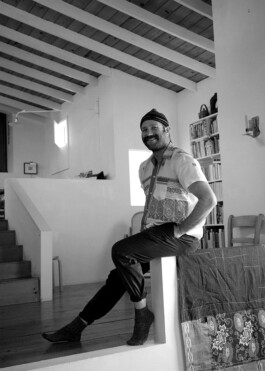
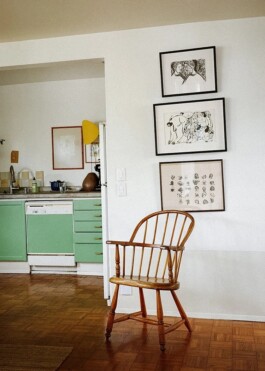
Folk Leader
Shop-owner, gallerist, curator, host... well Alex Tieghi-Walker is all of the above. Originally from a family of 'hoarders', Alex is now rooted in Echo Park on the East Side of Los Angeles where he 'champions self-taught artists' and showcases their work on his platform Tiwa Select, and at his residence which happens to be a former artists studio. There is a lot of creative energy in LA right now, and rest assured that ATW is at the centre of it. Whether he's here for the long haul, well that remains to be seen.
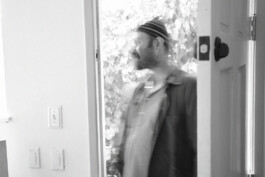
Tell me about your childhood and family life growing up in Wales? Your father was ceramicist and mother an academic, correct?
I bopped around a bit as a child, but I would call Wales and North Italy home. The two cultures couldn’t be more opposite, although of course there are overlaps – the mountains and lakes, the ruins, the crafts – my mum took me out of the last year of primary school so that we could move to Italy and so that I could learn Italian. I missed the school registration window so didn’t go to school for a year. During the week I would sit in the university library reading or drawing, or I’d take myself off around town solo (can you imagine a 10-year-old child wandering around the streets of Milan unaccompanied in 2022?!). My mum would make sure that every weekend we would wake up at dawn and visit a different part of Italy. My artist dad would take me around towns sketching or painting or taking photos. It was a pretty interesting childhood, I feel very lucky to have had parents who were so motivated to try new things.. to explore, and to encourage my curiosity.
As a family you traveled to some fascinating places collecting local artifacts. Did this become the blueprint for adult life as you seem to constantly move around drawing inspiration from people, places and objects?
We are all hoarders in my family, I think when you travel so much, it’s less about objects reminding you of where you have been that is “other,” but more they represent the general mindset that you aren’t necessarily connected to one place in particular. There is no “other” because there is no “here.” All those little objects build together a story – and they are opinions and viewpoints and compassion and inspiration.
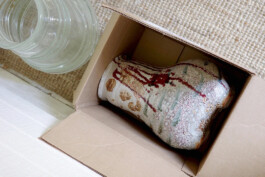
“All those little objects build together a story – and they are opinions and viewpoints and compassion and inspiration.”
When did you first move to London? I know you spent time working at Wallpaper* Magazine and NOWNESS. What was happening culturally in London around this time?
I started spending long stints in London as a teenager in the mid-2000s.. it was peak indie era and I made most of my friends doing the club circuit – White Heat on Tuesday, Gaz’s Rockin Blues on Thursday, Troubadour on Friday, a lot of us are still friends going back to that time. Back then you could also go to proper squat parties and raves, you’d spend hours underneath a railway arch, or watch the sun coming up while peeing into a canal from a warehouse roof. I don’t think the music scene is the same in London anymore.. or maybe it is, but I’m old and out of the loop. But it definitely felt like a moment. Back then I didn’t have the same time or energy to put into my own creativity, but I was surrounded by very creative people – many of whom are still close friends – and I think that era of our lives started very close, very experience-heavy friendships which have pushed and pulled our creative lives ever since.
I got my first job right after University at NOWNESS, which was running from the Dazed office. Again, this era was defined by a kaleidoscope of colorful cultural scenes happening in London. Being at Dazed put you in very intimate environments with a lot of interesting people – it felt like a nice time for London with good music, interesting filmmakers.. new artists – a lot of creative energy. This is a couple of years after the recession so people had a bit more money to spend, but there was still that feeling that you needed to make life count. I think London felt quite hedonistic at the time, people just wanted to enjoy themselves and make art and have fun doing it.
And then a shift to a slower pace of life in Berkeley CA? What was the incentive for this move?
In all honesty, I just needed to slow down a bit. I moved to Northern California when I was 27, my mother had died and I’d broken up with a long-term boyfriend and I’d been working and partying a lot and I just wanted to feel a bit more grounded. I kept writing and consulting on creative and film projects, the same type of things I’d been doing at NOWNESS, but I also started working on a winery and mixed use farm called Scribe up in Sonoma, and trying to get an arts residency program off the ground. The residency never happened, but it connected my interests and made me start to think about working in a field where I wasn’t just writing about art or design, but where I was able to work directly with artists or designers to share their work.

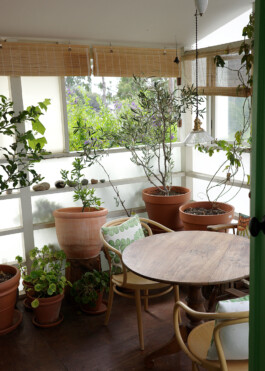
Tell me about the idea behind the The Anonymous Sex Journal? Are you currently working on a new issue?
RIP. It was a great project, but I feel it had its moment. People seem a lot more comfortable talking about sex these days; it’s amazing how attitudes change in just a short time. When I started ASJ, few people or publications talked about sex with that tenderness or honesty, or queerness. Or pegging.
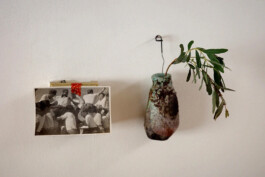
What bought you to LA and when did you conceive of the idea for Tiwa Select? The company appears to be rooted in the discovery of emerging or undiscovered self-taught artists. And I love your idea to ‘push for the survival of traditional art forms that are created with time, kindness and humility’.
Tiwa Select was founded while I was still up in Berkeley. My house had become a bit of a community hub for friends working in food, design and art. Because of my role at Scribe, I started to build a community that felt rooted not just in creativity, but other worlds that overlapped. I’d invite different chefs – food folks like Masayo Funakoshi, Chris Kronner, Fanny Singer, and Emma Lipp – into my house to cook meals. I’d invite different artists to show their work in tandem with meals. The basis of Tiwa Select was a platform for food and functional art to come together. My home – an incredibly beautiful redwood cabin that felt like a boat – became a type of showroom for these objects. It was also an event space. And when You-Know-What had us all go into lockdown in March 2020, I had to drop the communal aspect and shifted more towards focusing on artists who were working in traditional practices, but making objects associated with food, or rituals, or the home. I could sell these online and that’s when the community grew beyond Berkeley.
Tiwa Select also seems to be a myriad of ideas from gallery to online store to artist representation and events. Is your approach just to let the company develop organically?
I guess it’s more inexperience, in that perhaps I didn’t feel as confident to go straight into being a fully-fledged gallerist, but wanted to do more than just be a shop keeper. There’s also something about keeping elements of the company more accessible – I feel uncomfortable with out-pricing an audience who might want to start collecting. More so, because if you think of craft and folk craft and its origins, it was never intended to be expensive, and these functional works weren’t even intended always to be simply collected and displayed, but used. I actually do seem to be moving much closer to that traditional model of a gallery – a series of shows each year and full representation of artists, but I’d still like to think of a micro shop that changes stock over frequently – little “drops” of affordable works here and there.
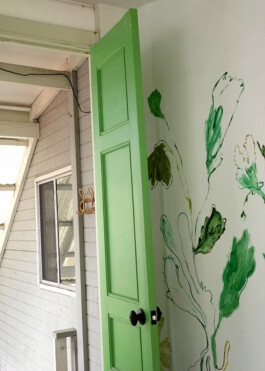

When and how did you discover the property you currently call home in Echo Park? I know you use the space to showcase some of the artists you represent and also host exhibitions and parties.
ATW I love this spot, even as I think about the end of my time there. Like the Berkeley spot, this home is where the pieces I sell are merchandised and introduced to people. I like the idea of functional works being shown in spaces that are alive, not just four white walls and track lights. I actually found this spot just by browsing online, but the owners were very open and excited about me doing works to the place. I see the house itself as my own canvas, it’s been fun to commission artists to make fixtures and paint murals: Skye Chamberlain built the shutters referencing the Barragan homes (the house has quite a Barragan feel), and Pato Iglesias created a mural in the sunroom. The home has a special energy, people like feeling at ease in the space, whether it’s a one-on-one showroom viewing, an intimate lunch, or a large party (which I’ve definitely been known to have – sorry Echo Park police department).
Tell us about the concept for your your recent exhibition ‘Everyday Rituals’ in partnership with Max Farago at Frieze LA. I know you’re interested in advocating somewhat anonymous talent working across mixed media?
Max Farago is a great friend and shares a very similar interest in championing artists with less conventional careers. Max’s passion lands more on traditional wall art, but we decided to curate a show together that celebrated artists who had never (or rarely) shown work, and whose lives had impacted their work, either through a particularly unusual way of making art in their lives, or through events that changed the course of their work. The artists in this show are all geniuses who created work on a purely personal level, never with the intention to show in a gallery environment. As it turned out, the youngest artist we were showing was Peter Shire, who is 75. The eldest artist (Ewo Kagoshima) is still making works at 96 and had been selling his surreal paintings on the streets of Manhattan. The rest fell in age between these two, so we’re we’re championing experience and patience too. It was a magical show to put together and we were glad that many of the artists were able to attend the opening, too.
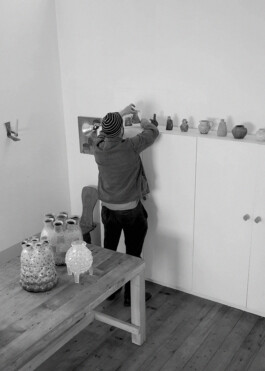
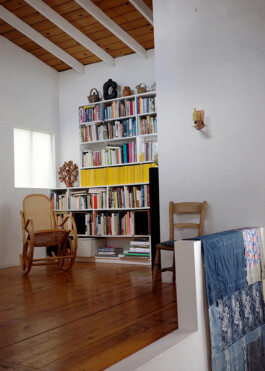
“I’d still like to think of a micro shop that changes stock over frequently – little “drops” of affordable works here and there.”
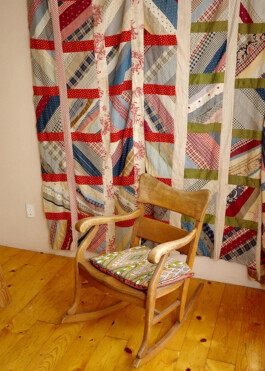
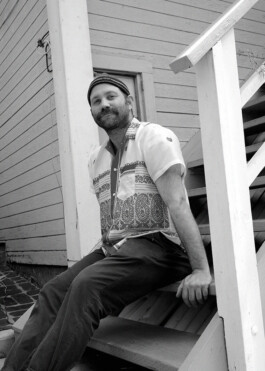
What’s up next exhibition-wise? And which artists are you most excited about featuring on Tiwa Select right now?
Vince Skelly’s show “After the Storm” is open right now. Vince is a former skater and musician who carved single pieces of wood into fantastical objects using just a chainsaw. For this show, he’s carving pieces cut from trees that came down in a storm in his hometown, Claremont in Southern California, so it’s also a message about how climate change will impact us more and and more unless we start to change the systems upholding the climate collapse. A percentage of proceeds from this show will go to replanting the town with trees that are climate-appropriate for future generations. In terms of new artists, I just visited Salone del Mobile in Milan, there’s obviously a lot of large brands showing works and partnerships, but I went with my scouting hat on and met some amazing grads who are really pushing the envelope of what design can be, specifically using more traditional craft practices.
Where do you think you’ll next call home?
I think it’s likely NYC, I’ve never lived there. I think most people from London slowly creep West, but I sprang immediately over to California and am now creeping back East. I’ll probably end up in the UK eventually, maybe retire finally somewhere fab like Morocco or Naples. Ha
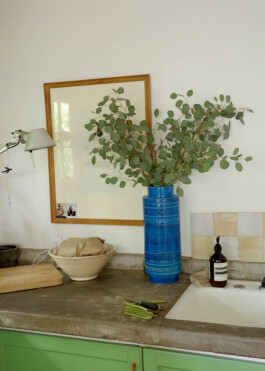
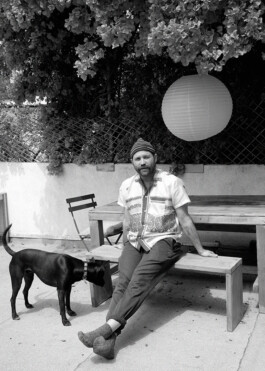

Folk Leader

Shop-owner, gallerist, curator, host... well Alex Tieghi-Walker is all of the above. Originally from a family of 'hoarders', Alex is now rooted in Echo Park on the East Side of Los Angeles where he 'champions self-taught artists' and showcases their work on his platform Tiwa Select, and at his residence which happens to be a former artists studio. There is a lot of creative energy in LA right now, and rest assured that ATW is at the centre of it. Whether he's here for the long haul, well that remains to be seen.

Tell me about your childhood and family life growing up in Wales? Your father was ceramicist and mother an academic, correct?
I bopped around a bit as a child, but I would call Wales and North Italy home. The two cultures couldn’t be more opposite, although of course there are overlaps – the mountains and lakes, the ruins, the crafts – my mum took me out of the last year of primary school so that we could move to Italy and so that I could learn Italian. I missed the school registration window so didn’t go to school for a year. During the week I would sit in the university library reading or drawing, or I’d take myself off around town solo (can you imagine a 10-year-old child wandering around the streets of Milan unaccompanied in 2022?!). My mum would make sure that every weekend we would wake up at dawn and visit a different part of Italy. My artist dad would take me around towns sketching or painting or taking photos. It was a pretty interesting childhood, I feel very lucky to have had parents who were so motivated to try new things.. to explore, and to encourage my curiosity.
As a family you traveled to some fascinating places collecting local artifacts. Did this become the blueprint for adult life as you seem to constantly move around drawing inspiration from people, places and objects?
We are all hoarders in my family, I think when you travel so much, it’s less about objects reminding you of where you have been that is “other,” but more they represent the general mindset that you aren’t necessarily connected to one place in particular. There is no “other” because there is no “here.” All those little objects build together a story – and they are opinions and viewpoints and compassion and inspiration.

“All those little objects build together a story – and they are opinions and viewpoints and compassion and inspiration.”
When did you first move to London? I know you spent time working at Wallpaper* Magazine and NOWNESS. What was happening culturally in London around this time?
I started spending long stints in London as a teenager in the mid-2000s.. it was peak indie era and I made most of my friends doing the club circuit – White Heat on Tuesday, Gaz’s Rockin Blues on Thursday, Troubadour on Friday, a lot of us are still friends going back to that time. Back then you could also go to proper squat parties and raves, you’d spend hours underneath a railway arch, or watch the sun coming up while peeing into a canal from a warehouse roof. I don’t think the music scene is the same in London anymore.. or maybe it is, but I’m old and out of the loop. But it definitely felt like a moment. Back then I didn’t have the same time or energy to put into my own creativity, but I was surrounded by very creative people – many of whom are still close friends – and I think that era of our lives started very close, very experience-heavy friendships which have pushed and pulled our creative lives ever since.
I got my first job right after University at NOWNESS, which was running from the Dazed office. Again, this era was defined by a kaleidoscope of colorful cultural scenes happening in London. Being at Dazed put you in very intimate environments with a lot of interesting people – it felt like a nice time for London with good music, interesting filmmakers.. new artists – a lot of creative energy. This is a couple of years after the recession so people had a bit more money to spend, but there was still that feeling that you needed to make life count. I think London felt quite hedonistic at the time, people just wanted to enjoy themselves and make art and have fun doing it.
And then a shift to a slower pace of life in Berkeley CA? What was the incentive for this move?
In all honesty, I just needed to slow down a bit. I moved to Northern California when I was 27, my mother had died and I’d broken up with a long-term boyfriend and I’d been working and partying a lot and I just wanted to feel a bit more grounded. I kept writing and consulting on creative and film projects, the same type of things I’d been doing at NOWNESS, but I also started working on a winery and mixed use farm called Scribe up in Sonoma, and trying to get an arts residency program off the ground. The residency never happened, but it connected my interests and made me start to think about working in a field where I wasn’t just writing about art or design, but where I was able to work directly with artists or designers to share their work.


Tell me about the idea behind the The Anonymous Sex Journal? Are you currently working on a new issue?
RIP. It was a great project, but I feel it had its moment. People seem a lot more comfortable talking about sex these days; it’s amazing how attitudes change in just a short time. When I started ASJ, few people or publications talked about sex with that tenderness or honesty, or queerness. Or pegging.

What bought you to LA and when did you conceive of the idea for Tiwa Select? The company appears to be rooted in the discovery of emerging or undiscovered self-taught artists. And I love your idea to ‘push for the survival of traditional art forms that are created with time, kindness and humility’.
Tiwa Select was founded while I was still up in Berkeley. My house had become a bit of a community hub for friends working in food, design and art. Because of my role at Scribe, I started to build a community that felt rooted not just in creativity, but other worlds that overlapped. I’d invite different chefs – food folks like Masayo Funakoshi, Chris Kronner, Fanny Singer, and Emma Lipp – into my house to cook meals. I’d invite different artists to show their work in tandem with meals. The basis of Tiwa Select was a platform for food and functional art to come together. My home – an incredibly beautiful redwood cabin that felt like a boat – became a type of showroom for these objects. It was also an event space. And when You-Know-What had us all go into lockdown in March 2020, I had to drop the communal aspect and shifted more towards focusing on artists who were working in traditional practices, but making objects associated with food, or rituals, or the home. I could sell these online and that’s when the community grew beyond Berkeley.
Tiwa Select also seems to be a myriad of ideas from gallery to online store to artist representation and events. Is your approach just to let the company develop organically?
I guess it’s more inexperience, in that perhaps I didn’t feel as confident to go straight into being a fully-fledged gallerist, but wanted to do more than just be a shop keeper. There’s also something about keeping elements of the company more accessible – I feel uncomfortable with out-pricing an audience who might want to start collecting. More so, because if you think of craft and folk craft and its origins, it was never intended to be expensive, and these functional works weren’t even intended always to be simply collected and displayed, but used. I actually do seem to be moving much closer to that traditional model of a gallery – a series of shows each year and full representation of artists, but I’d still like to think of a micro shop that changes stock over frequently – little “drops” of affordable works here and there.


When and how did you discover the property you currently call home in Echo Park? I know you use the space to showcase some of the artists you represent and also host exhibitions and parties.
ATW I love this spot, even as I think about the end of my time there. Like the Berkeley spot, this home is where the pieces I sell are merchandised and introduced to people. I like the idea of functional works being shown in spaces that are alive, not just four white walls and track lights. I actually found this spot just by browsing online, but the owners were very open and excited about me doing works to the place. I see the house itself as my own canvas, it’s been fun to commission artists to make fixtures and paint murals: Skye Chamberlain built the shutters referencing the Barragan homes (the house has quite a Barragan feel), and Pato Iglesias created a mural in the sunroom. The home has a special energy, people like feeling at ease in the space, whether it’s a one-on-one showroom viewing, an intimate lunch, or a large party (which I’ve definitely been known to have – sorry Echo Park police department).
Tell us about the concept for your your recent exhibition ‘Everyday Rituals’ in partnership with Max Farago at Frieze LA. I know you’re interested in advocating somewhat anonymous talent working across mixed media?
Max Farago is a great friend and shares a very similar interest in championing artists with less conventional careers. Max’s passion lands more on traditional wall art, but we decided to curate a show together that celebrated artists who had never (or rarely) shown work, and whose lives had impacted their work, either through a particularly unusual way of making art in their lives, or through events that changed the course of their work. The artists in this show are all geniuses who created work on a purely personal level, never with the intention to show in a gallery environment. As it turned out, the youngest artist we were showing was Peter Shire, who is 75. The eldest artist (Ewo Kagoshima) is still making works at 96 and had been selling his surreal paintings on the streets of Manhattan. The rest fell in age between these two, so we’re we’re championing experience and patience too. It was a magical show to put together and we were glad that many of the artists were able to attend the opening, too.


“I’d still like to think of a micro shop that changes stock over frequently – little “drops” of affordable works here and there.”


What’s up next exhibition-wise? And which artists are you most excited about featuring on Tiwa Select right now?
Vince Skelly’s show “After the Storm” is open right now. Vince is a former skater and musician who carved single pieces of wood into fantastical objects using just a chainsaw. For this show, he’s carving pieces cut from trees that came down in a storm in his hometown, Claremont in Southern California, so it’s also a message about how climate change will impact us more and and more unless we start to change the systems upholding the climate collapse. A percentage of proceeds from this show will go to replanting the town with trees that are climate-appropriate for future generations. In terms of new artists, I just visited Salone del Mobile in Milan, there’s obviously a lot of large brands showing works and partnerships, but I went with my scouting hat on and met some amazing grads who are really pushing the envelope of what design can be, specifically using more traditional craft practices.
Where do you think you’ll next call home?
I think it’s likely NYC, I’ve never lived there. I think most people from London slowly creep West, but I sprang immediately over to California and am now creeping back East. I’ll probably end up in the UK eventually, maybe retire finally somewhere fab like Morocco or Naples. Ha

